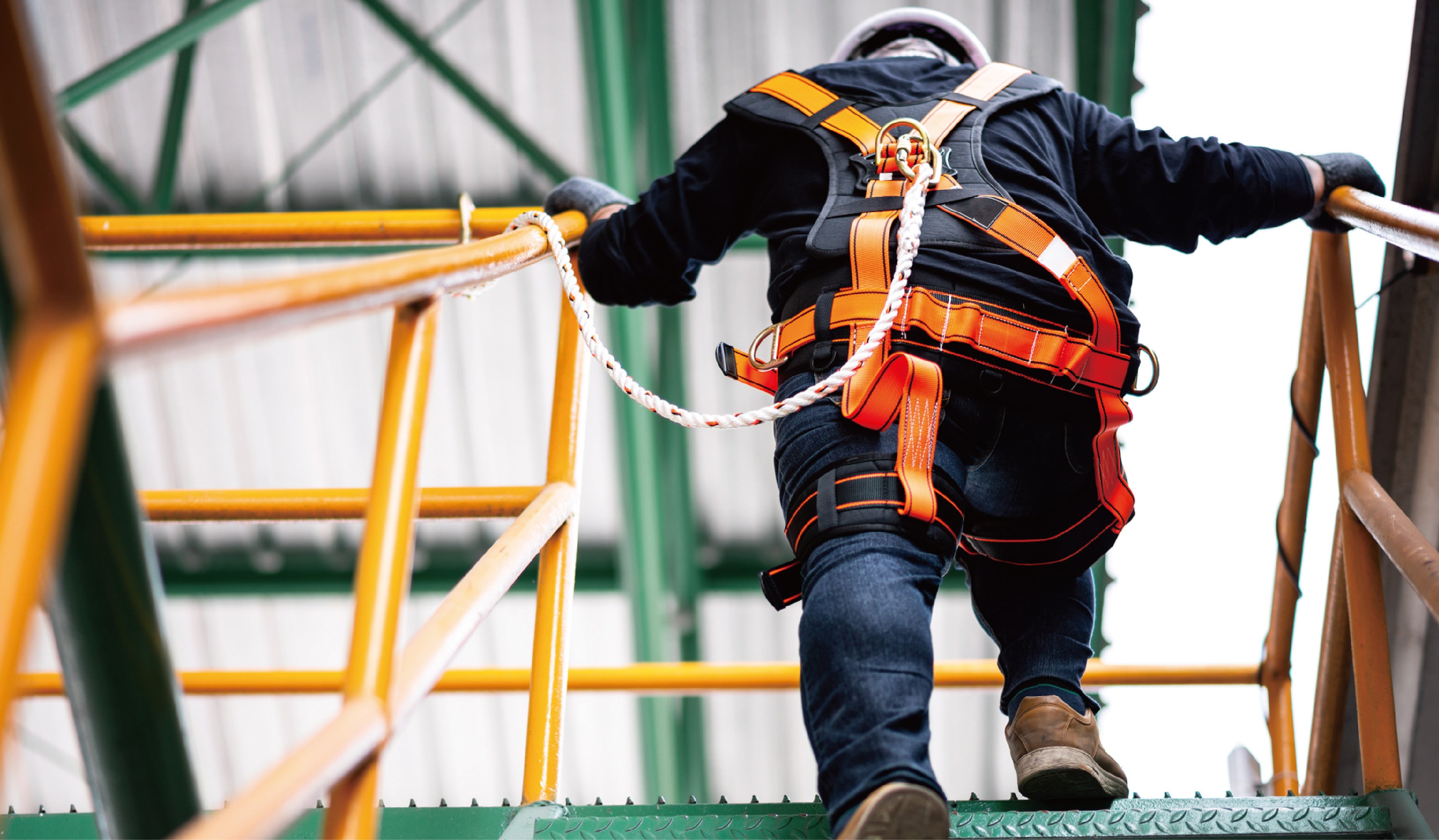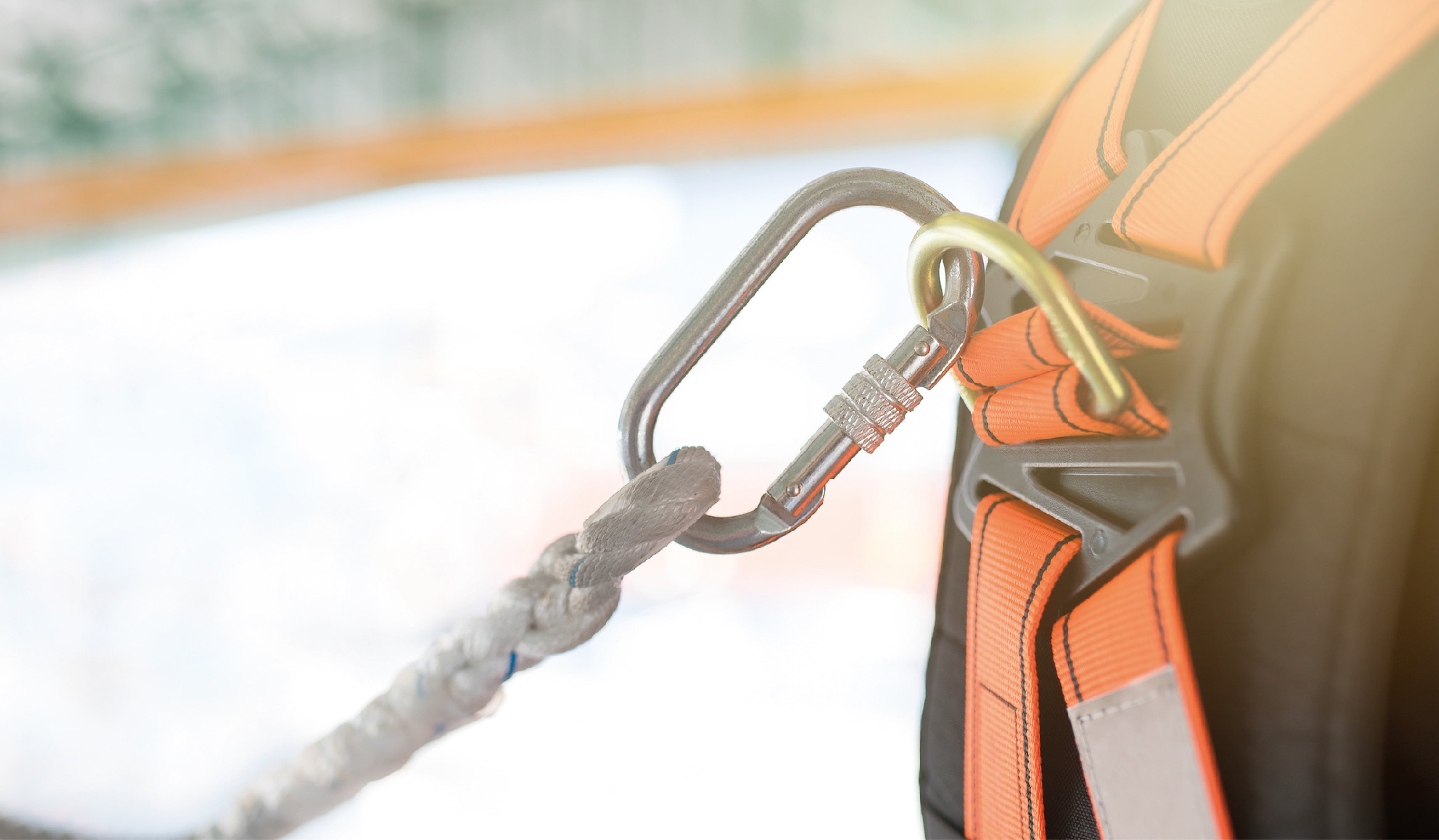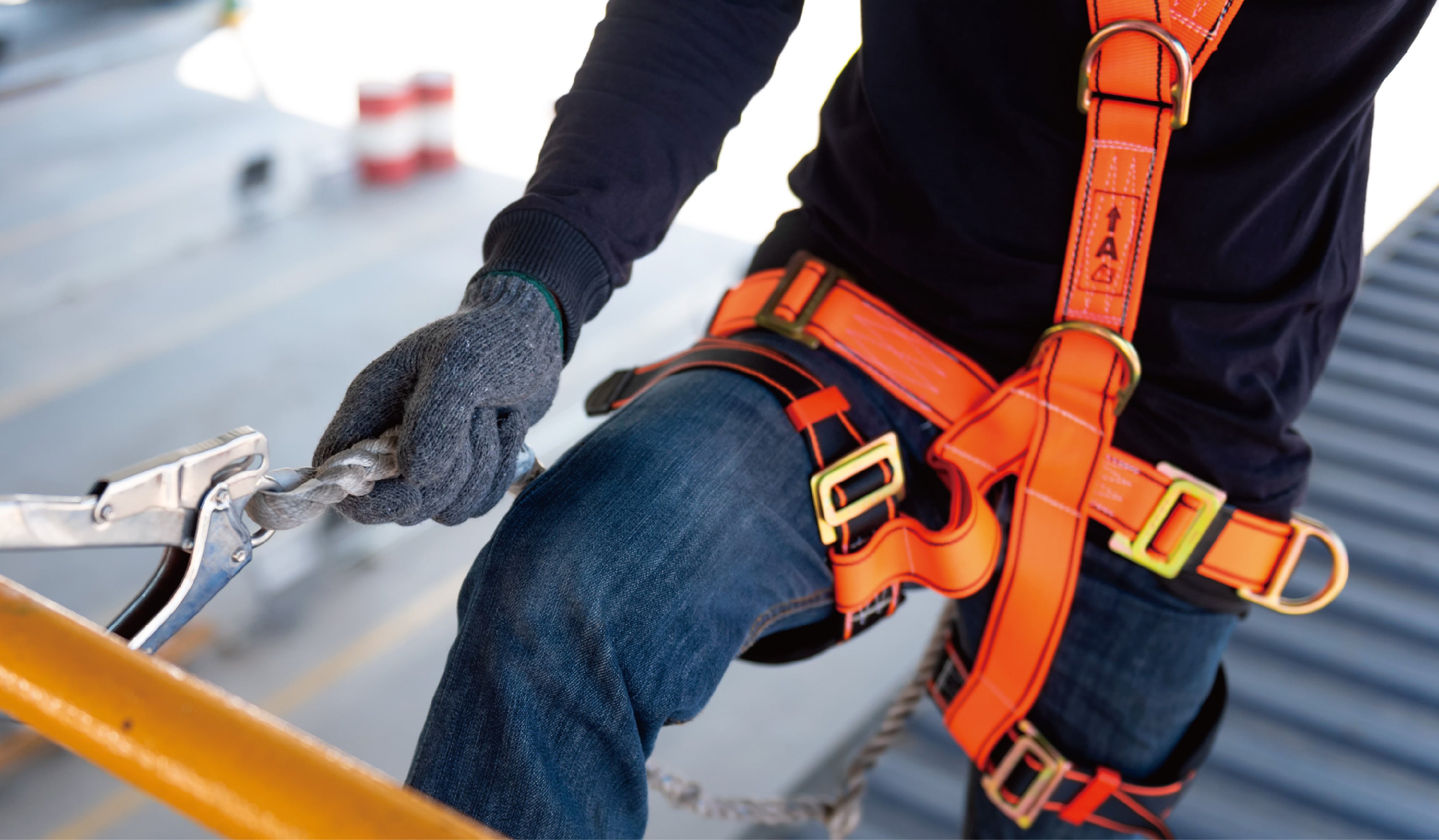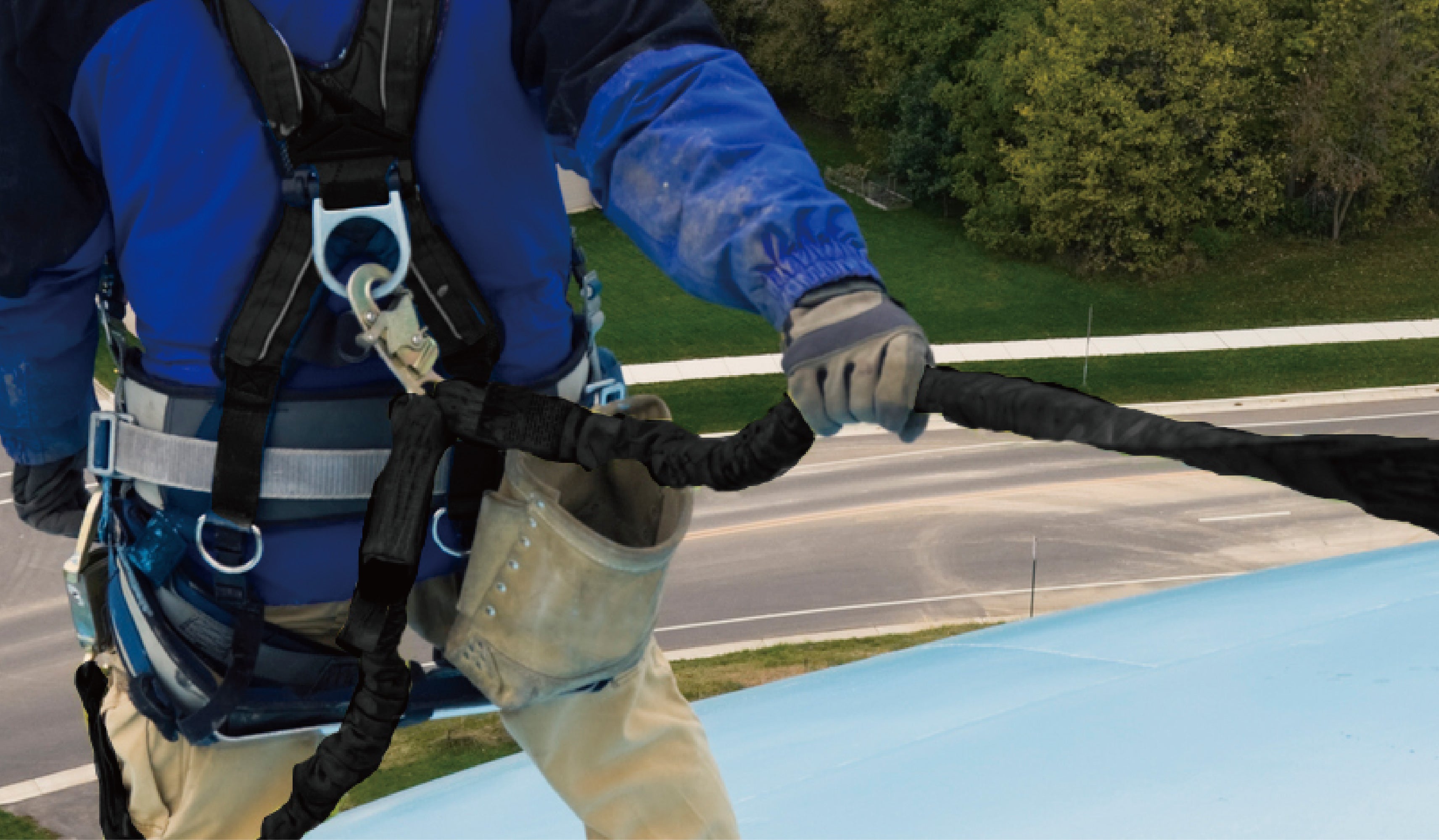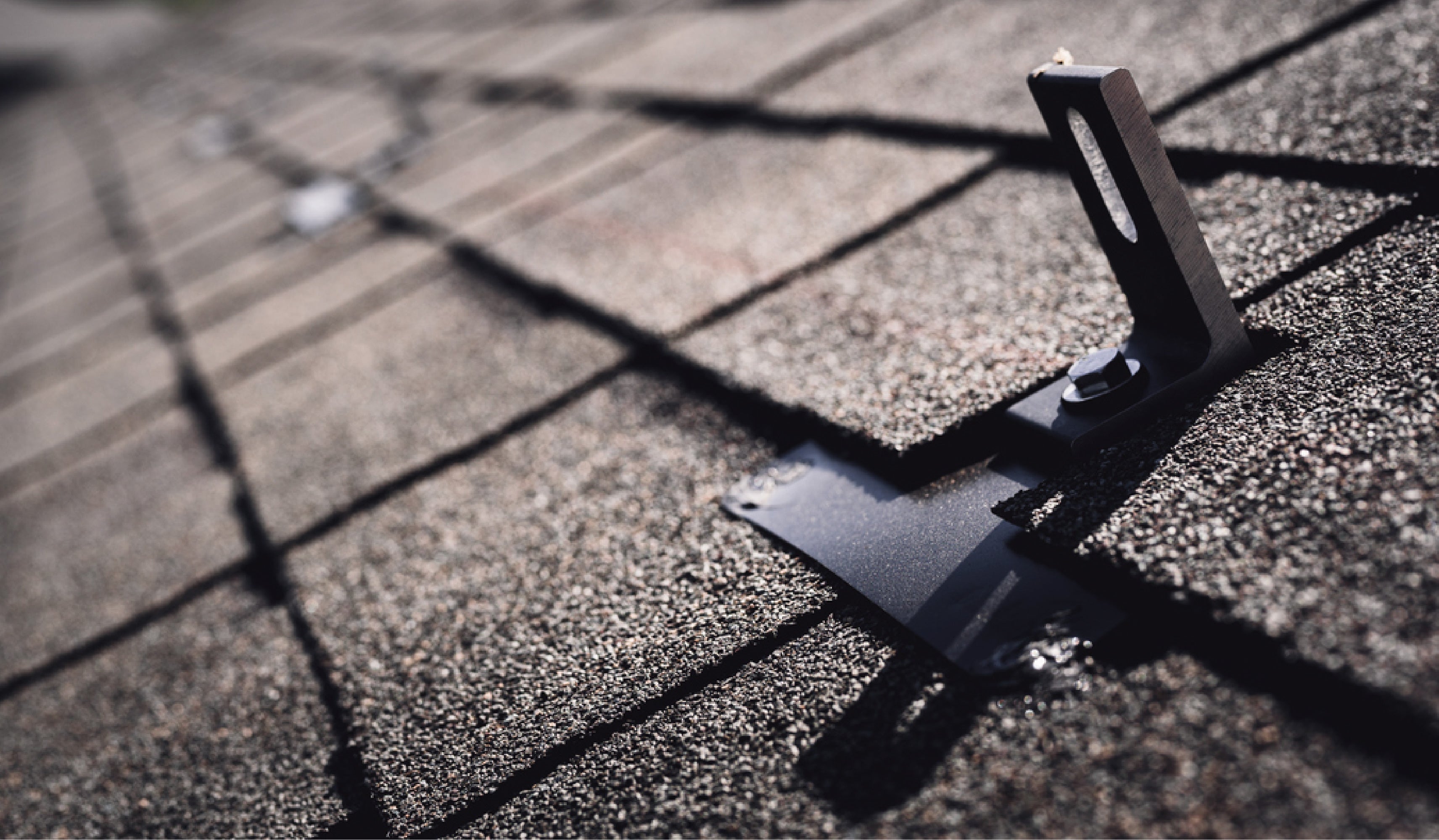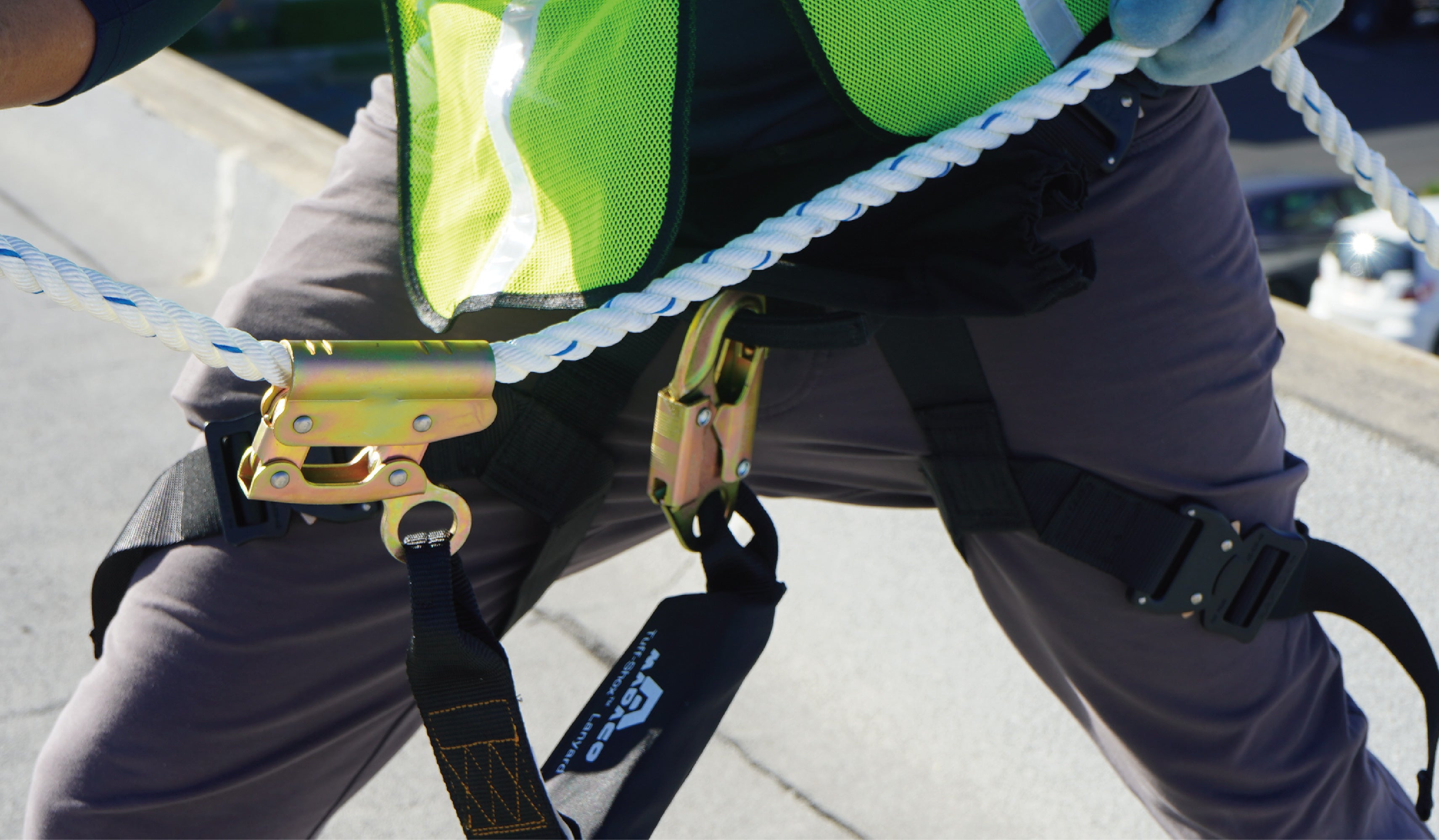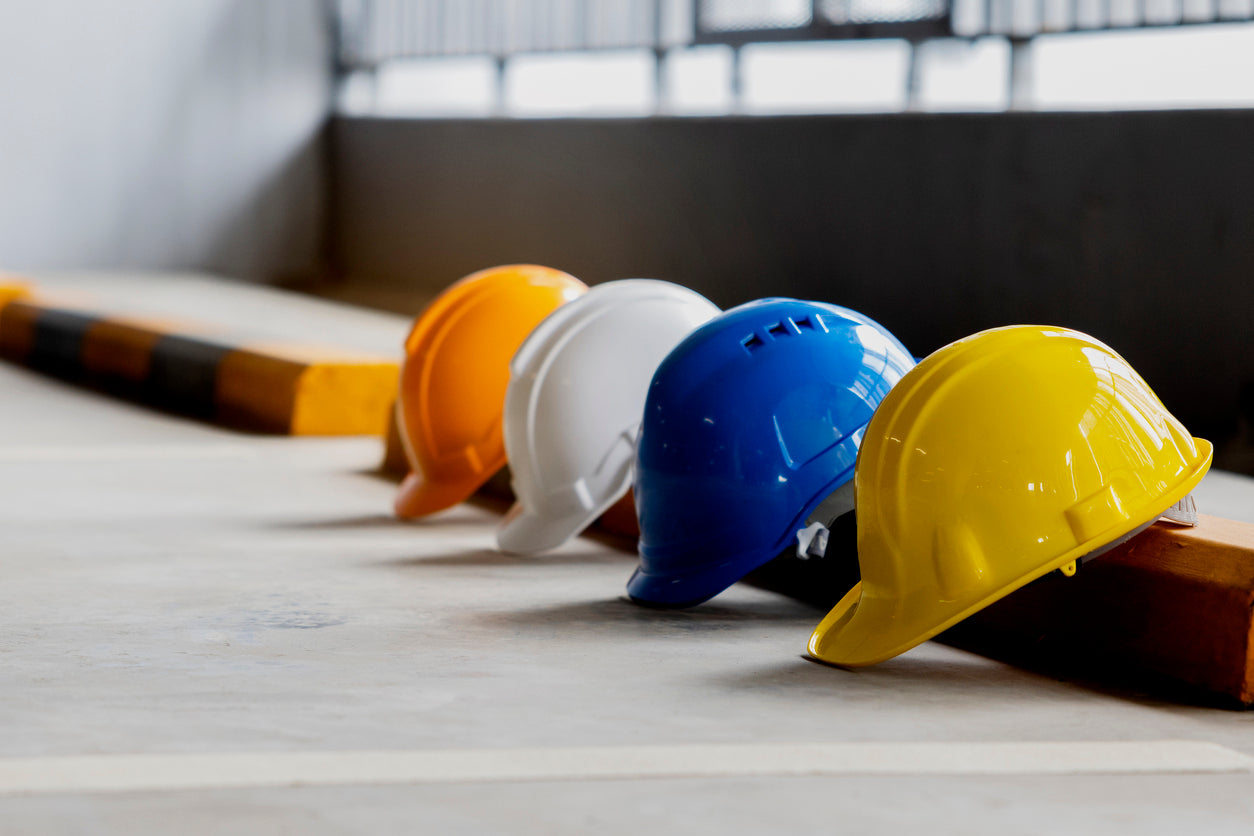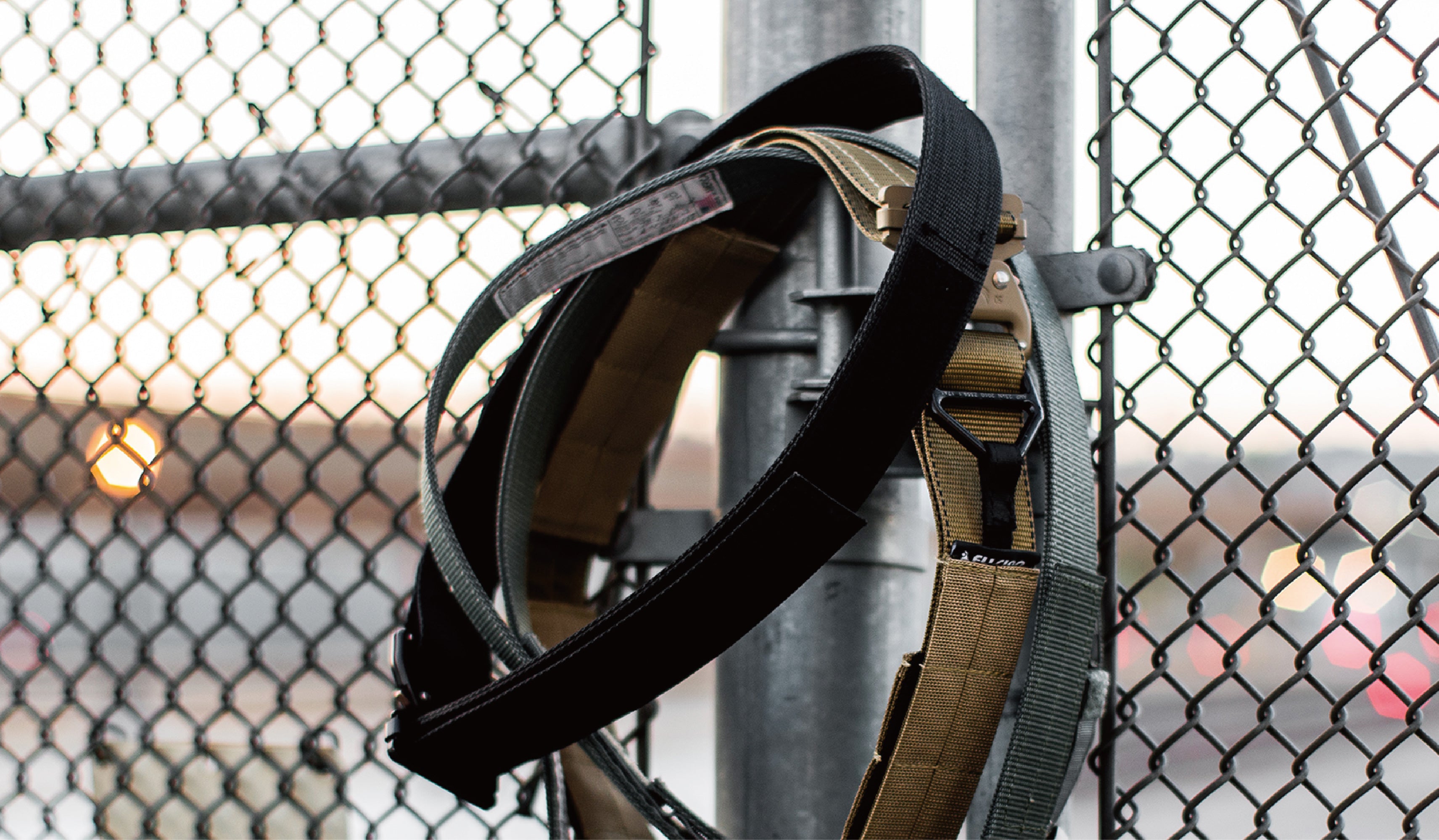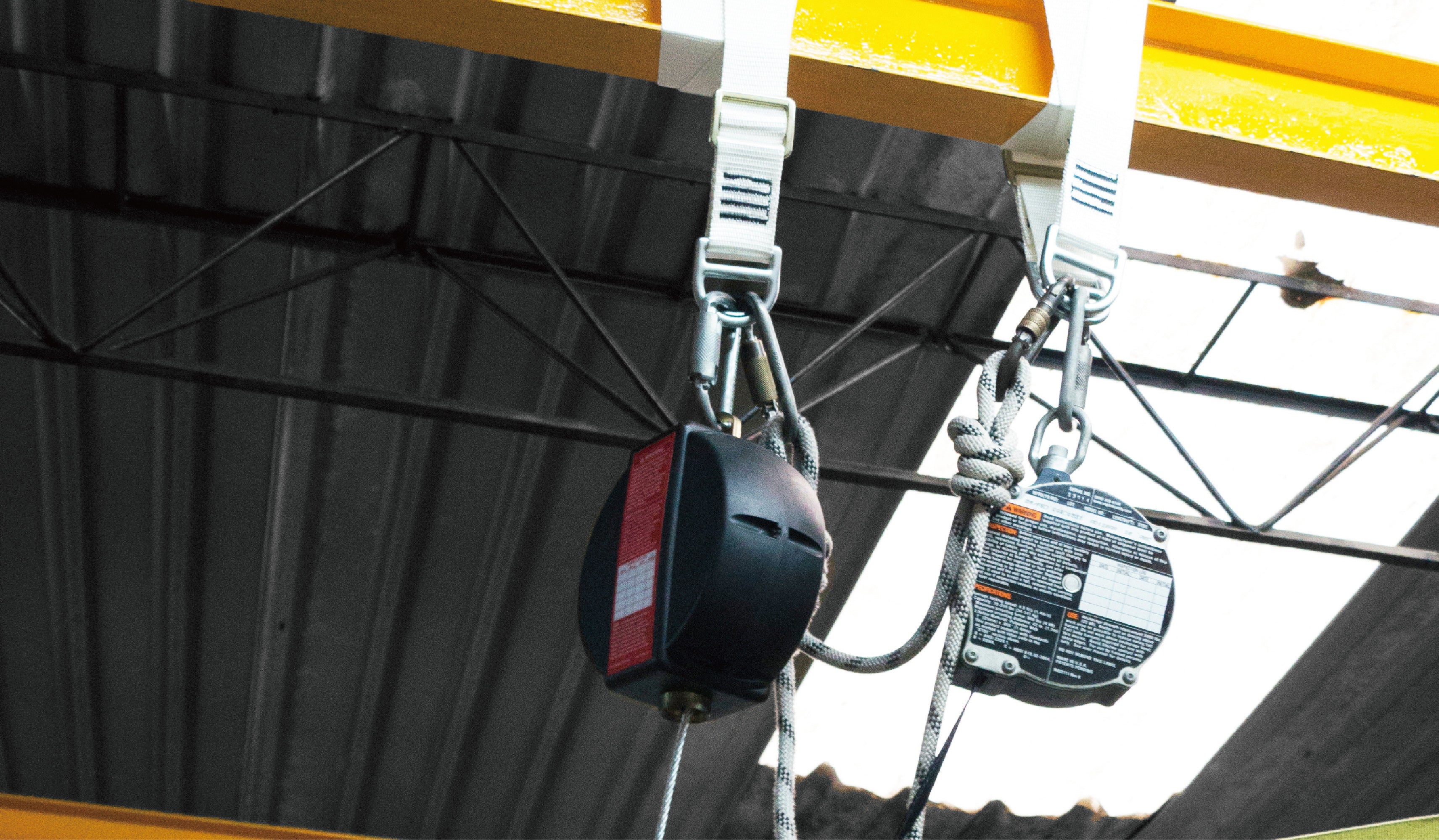Maintaining a careful equilibrium between safeguarding your team from fall risks and ensuring unhindered productivity is crucial. Introducing the self-retracting lifeline to your fall protection system proves invaluable when providing your workers, the freedom to navigate worksites with fall hazards. Ideal for a range of applications, these vertical connectors seamlessly blend flexibility with security. Through proper handling and utilization, self-retracting lifelines serve as a reliable tool, enabling your workers to excel in their tasks while prioritizing their safety.

What is a Self-Retracting Lifeline?
Two integral components comprise self-retracting lifelines (SRL): a lanyard and a housing unit, known as a self-retracting device (SRD). The mechanism operates as follows: when the lanyard is extended and released, it automatically retracts into the housing unit, a characteristic that defines its nomenclature.
In the event of a worker's fall while utilizing an SRL, the lifeline undergoes a sharp tug, triggering an automatic braking system within the housing unit. This system curtails the falling distance to mere inches. As long as tension persists, the lifeline remains immobilized, securely holding the worker in place until rescue.
Conceptually akin to a seatbelt, a self-retracting lifeline exhibits an extend-and-retract functionality, locking in response to abrupt force. This design not only averts falls but also restricts the force exerted on the worker's body in the event of a fall, consequently mitigating potential injuries and hazards on the job
Within the industry, this equipment goes by various names. Apart from self-retracting lifelines, it may be referred to as yo-yos, blocks, devices, retractable, retractable lanyards, and automatic fall arrest devices.

Differences Between Common SRLs?
The retractors currently in use have undergone significant evolution from their early iterations. In the early 20th century, workers relied on basic lanyards to maintain a connection to the structures they were working on. At that time, there was a lack of connectors that could facilitate workplace mobility while effectively safeguarding against falls.
The addition of an automatic braking system to connectors marked a pivotal development in 1963, employing a disk block to halt lifeline payout during a fall. Subsequent to this, a new design emerged in 2002, incorporating teeth and pawls to enhance the braking system. If the lifeline exhibited a sudden payout, the pawls and teeth would engage, ensuring a secure halt to the lifeline. This design, incorporating teeth and pawls, remains a staple in the construction of self-retracting lifelines to this day.
With technological progress, regulations also evolved. In 2012, ANSI introduced the Z359.14-2012 standard, delineating proper usage, maintenance, and performance requirements. This standard also established two classes for self-retracting lifelines: Class A and Class B.

Types of Self-Retracting Lifelines (SRL)
According to the ANSI Z359.14-2012 standard, self-retracting lifelines (SRLs) can generally be categorized into three main types:
1. SRLs (Standard Retractable Lifelines):
- Application: Suitable for a variety of applications and situations.
- Usage: Versatile and can be employed in diverse scenarios.
2. SRL-Rs (Rescue-Specific Retractable Lifelines):
- Application: Specifically designed for use in rescue situations.
- Usage: Tailored for rescue scenarios, providing specialized functionality.
3. SRL-LEs (Leading Edge Retractable Lifelines):
- Application: Designed to withstand contact with a leading edge.
- Usage: Intended for situations involving leading edges, offering enhanced durability.
While both SRL-Rs and SRL-LEs can be used in scenarios that don't specifically require their functionalities, using an SRL in a rescue scenario is not effective, and under no circumstances should an SRL be used over a leading edge.
The classification also includes two classes, Class 1 and Class 2, which likely pertain to specific performance or safety standards.
Furthermore, self-retracting lifelines may be colloquially referred to as "overhead" or "personal" SRLs. "Overhead" indicates usage with an overhead anchorage, applicable to both SRLs and SRL-Rs. Personal SRLs, distinguished by their lighter and more compact design, connect directly to the dorsal D-ring. This smaller size enhances ease of use compared to the more common, larger SRLs. Personal SRLs are available in both SRL and SRL-LE configurations. However, it's important to note that lifelines with rescue capabilities cannot be used with personal self-retracting devices.
The following sections will delve into more detailed explanations of each type of self-retracting lifeline based on the ANSI Z359.14-2012 standard.

SRL Components
A self-retracting lifeline is comprised of three essential components: the lifeline, housing unit, and mechanism.
1. Lifeline:
- Materials Lifelines are commonly crafted from webbing, rope, or cable, with materials such as stainless or galvanized steel.
- Length: Available in varying lengths, ranging from as short as 6 ft. to as long as 195 ft., depending on the specific product.
2. Housing Unit:
- Outer Casing: Housed within a durable outer casing, the size of which can range from a few inches to over a foot, contingent on the lifeline's length.
- Contents: The casing accommodates the coiled lifeline, the braking system, mechanisms facilitating smooth payout, and a retraction spring. The retraction spring ensures that the lifeline remains taut during its movement in or out of the housing unit.
3. Mechanism:
- Variants: The mechanism typically takes the form of a snap hook, scaffold hook, or karabiner.
- Fall Indicator: Incorporated into these components is a fall indicator, a crucial safety feature. A visual indicator, such as a red or orange strip above the clamp, signals when the equipment has been subjected to a fall, indicating that it is no longer safe for use.
Understanding the construction and features of each component is integral to ensuring the effective and safe operation of self-retracting lifelines in various applications.
When To use SRL vs. an EAL
Both self-retracting lifelines (SRLs) and energy-absorbing lanyards (EALs) provide effective fall protection when used correctly. The choice between them depends on specific circumstances. SRLs offer distinct advantages when an overhead anchorage is available, providing an added range of motion. They also arrest falls faster, minimizing the force exerted on the worker. However, it's essential to note that SRLs must never be used as restraint devices to prevent workers from reaching fall hazards.
On the other hand, energy-absorbing lanyards (EALs) are ideal for fall protection in situations where an overhead anchorage is not feasible, such as in construction. They are typically lighter and less expensive than SRLs, making them a practical choice in certain work environments where overhead tie-offs are impractical.
It's crucial to emphasize that if the goal is to prevent workers from reaching fall hazards, an EAL or another type of lanyard should be used. The determination of the right fall protection option for specific work and job sites falls under the purview of the competent person responsible for overseeing safety protocols. Understanding the advantages and limitations of both SRLs and EALs is paramount in making informed decisions to enhance worker safety across diverse working environments.

SRL Inspection
Performing vital pre-use inspections for self-retracting lifelines is non-negotiable. Never use a device without a thorough inspection. Begin by checking the housing for cracks or damage, refraining from opening it without proper authorization. Ensure the label displays readable information, including the date of manufacture, serial number, manufacturer details, and warnings. If unreadable, remove the device from service.
Wear gloves, mount the SRL correctly, and avoid pulling or retracting it while lying flat. Examine the cable for rust, cuts, pitting, or signs of wear. Look for issues like kinks or bird caging. If any problems arise, remove the device from service. For webbing, inspect for holes, tears, abrasions, and fraying. Bend the lifeline to identify issues. Check the carabiner for cracks or bends, testing the lock for smooth functionality.
Conduct a retraction and tension test, ensuring smooth movements in and out. Complete the inspection with a braking test, checking for slippage and smooth retraction. If any problems arise during these tests, remove the device from service promptly.
SRL Maintenance and UpKeep
Maintaining lifelines is crucial to ensure their functionality when needed to save lives. While pre-use inspections help catch potential issues, proper care can prevent problems from arising.
When not in use, follow the manufacturer's storage guidelines, typically keeping lifelines in a cool, dry place away from moisture and direct sunlight.
Avoid freewheeling, a common cause of lifeline damage. Releasing the lifeline without maintaining light tension can lead to issues like the lifeline not coiling tightly, or the hook hitting the housing at high speeds, engaging the lock mechanism. Freewheeling can damage internal mechanisms and potentially destroy SRLs.
Additionally, remember that retractables are designed for fall arrest, not restraint. Never use an SRL as a restraint device. Adhering to these guidelines ensures the longevity and proper functionality of your lifeline equipment.




